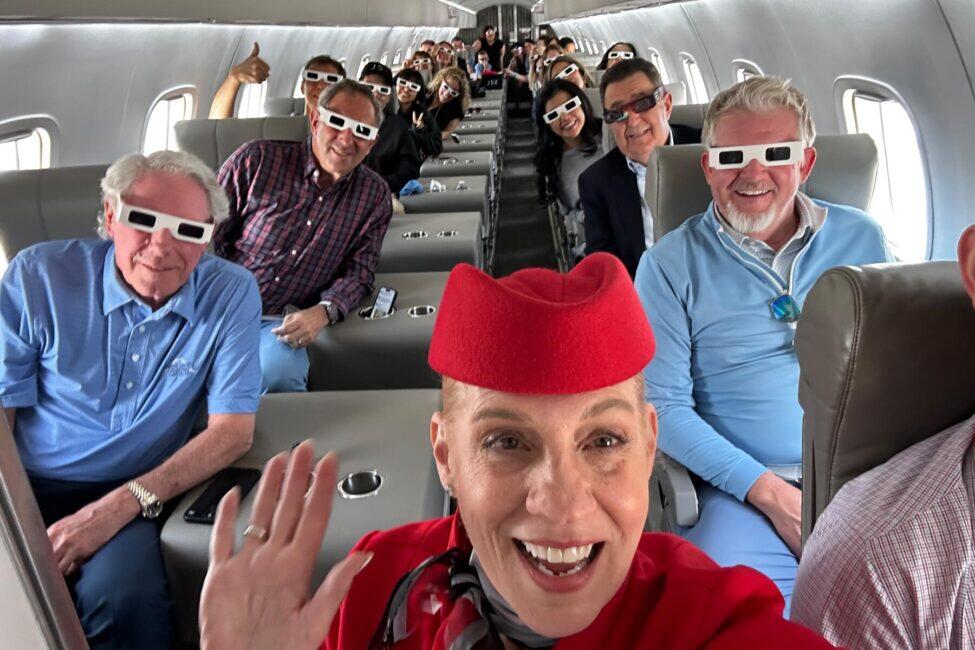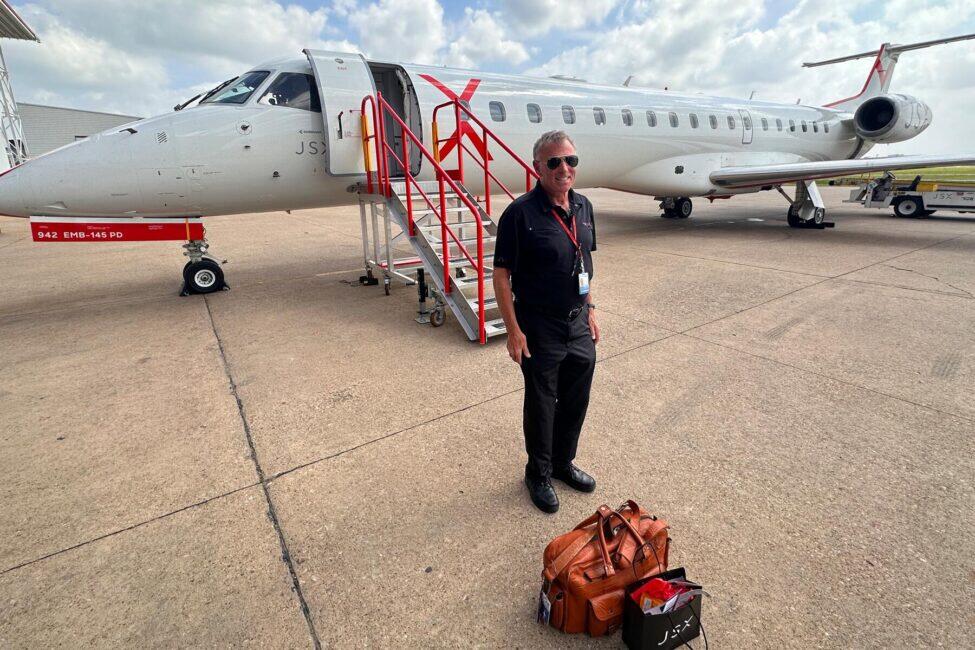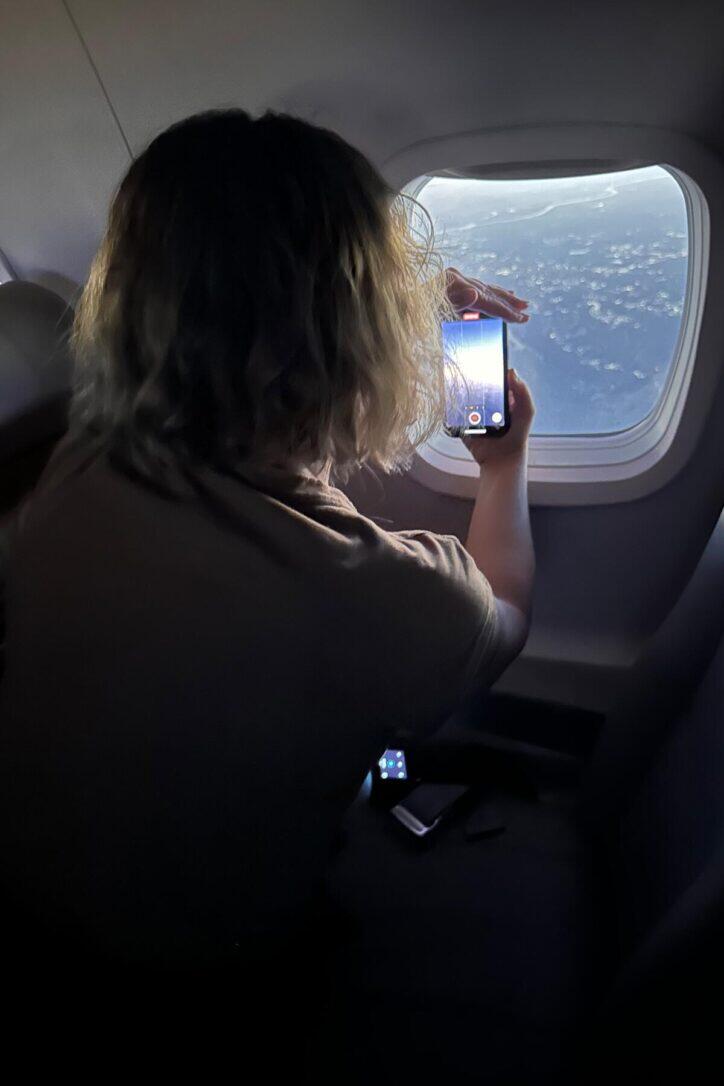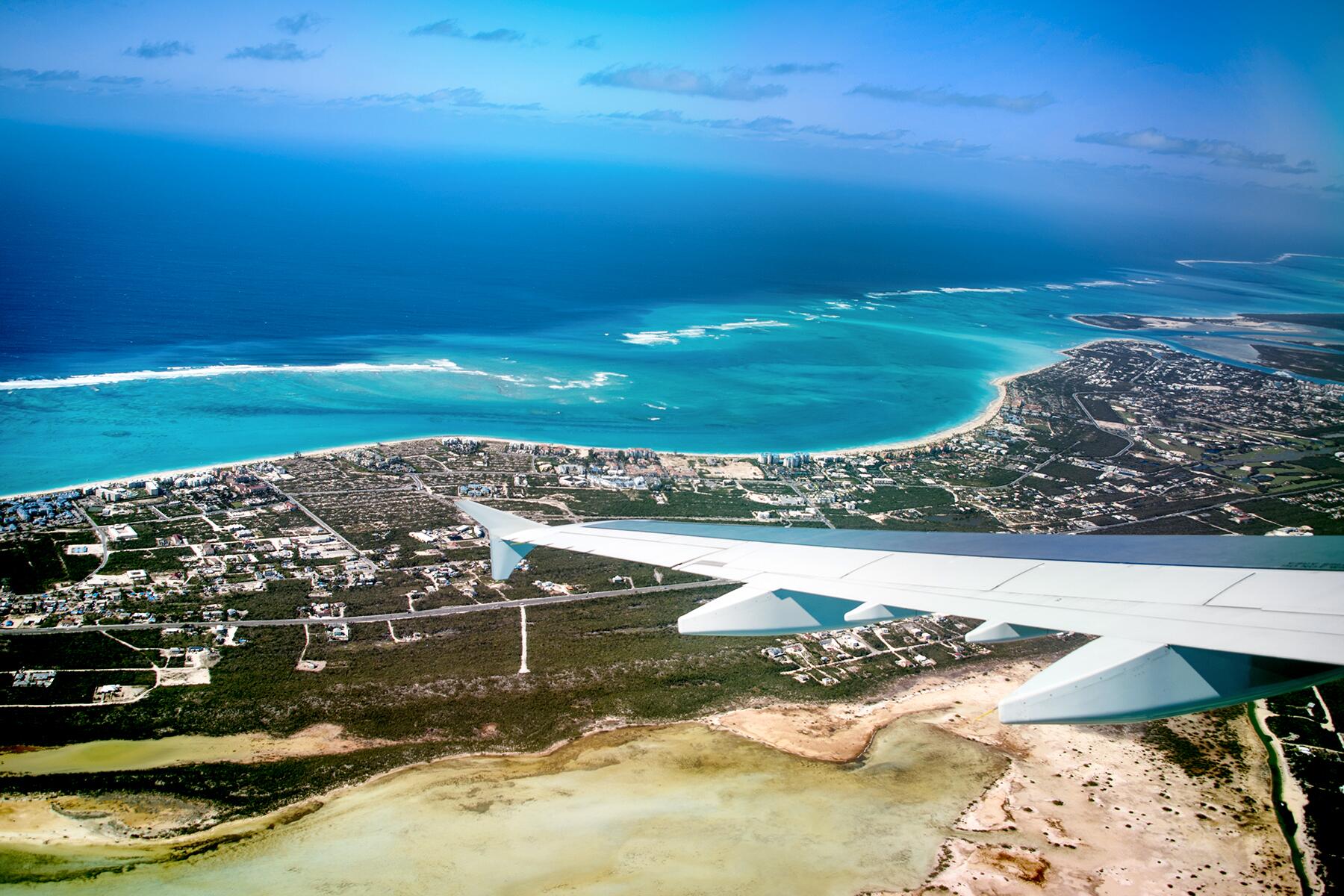Thirty passengers chased the eclipse and were rewarded with six minutes of totality.
Retired astronaut Bill Gregory has piloted the Space Shuttle Endeavour, completed 262 orbits, and traveled nearly seven million miles in space. But until Monday, he had never caught a total eclipse while flying into the path of totality.
During the celestial event, which awed Earth-bound observers from Mexico to Canada, Gregory took in the sight from the cockpit of an Embraer 145. He was co-piloting a non-revenue JSX flight from Dallas Love Field Airport filled with passengers–including sweepstakes winners, local STEM students, and media tagalongs like myself. Dubbed the Solar Express, the JSX flight flew along the path of totality, all while the pilots fielded questions and traded jokes with those onboard. (Q. “What was your scariest moment in space?” A. “I really didn’t have any scary moments in space.” Q. “Have you seen any aliens or UFOs?” A. “No.”)
Once totality set in for the flight’s 30 passengers—roughly 26,000 feet above Hot Springs, Arkansas—the pilots, including former F-14 fighter jet pilot and Navy Commander, Chris Swilley, banked the plane some 45 degrees so those aboard could get a look at the sun’s corona glittering against the dark hole of the moon.
Back on the ground in Dallas, I sat down in the JSX hangar with Gregory to ask if there was anything an astronaut and Space Shuttle pilot could take away from such a flight.

Here’s what he had to say, in his own words:
There was a partial solar eclipse when I was a young boy 60 years ago and my neighbor had a telescope set up so he could project it onto a white piece of cardboard to see it safely. Back then, we didn’t have eclipse glasses. I was probably about 10. I just remember my parents saying, “Don’t look up, you’ll burn your eyes.”
Recommended Fodor’s Video
This total solar eclipse was the first one in half a century for me. I’ve seen partials but not total eclipses since then.
The most interesting thing about this JSX flight was trying to work the timing and also trying to rotate the plane so the passengers could see the sun, which was high in the sky still during totality.
What was really interesting in the cockpit was how dark it got, we had to turn on the lights to see the gauges during totality. It was surprising how dark it got up there, and it was spectacular looking at the lights coming on down on the ground, too. You could see them coming on as their photo-electric cells turned on when it got dark. Then, when it started to get light again, it was like watching the sun rise from the west as the light returned to the sky and landscapes.
The key thing to our success with this flight, we knew, was we had to be off the ground before the eclipse started–and know that as we flew northeast, the eclipse would catch up with us from behind. It’s closure rate on us from behind was over 1,000 mph.
We took off 30 minutes before totality was due to set in in Dallas. The whole idea was to be cognizant of ground delays, then once we got airborne, we had to slow down and allow the eclipse to catch us from behind.

After taking off to the southeast, we headed northeast toward Arkansas, with Paris, Texas, off the left wing and Texarkana off the right. We were already in the region of the penumbra after take off, but when the umbra caught us from behind, that’s when everything really went dark and transitioned from the partial to the total eclipse.
Totality caught us near Hot Springs, Arkansas, and we increased our speed from 300 to 400 knots to spend the most time possible in it. Passengers had to look up to see the sun in totality through their windows, so we were banking in a way–it’s called flying in a slip. That let us roll into the bank and be able to see it while staying on course.
Air Traffic Control (ATC) was overloaded and they were going nuts trying to deal with everyone’s requests.
I think it went pleasantly well, under the circumstances. It was very challenging trying to talk to ATC radio. When you’re flying the Space Shuttle, everything is scripted. You’ve got mission control watching over you. This was much more freelance. When you’re on the Space Shuttle, every time you breathe, someone is listening from mission control. There are two minutes on the far side of the Earth where there’s a loss of comms–it’s the only spot the TDRS [The Tracking and Data Relay Satellite] doesn’t have cover. That’s when everyone in mission control is going to the bathrooms; the only break in a 90-minute orbit. But it was a busy day for Air Traffic Control in the path of totality. When they don’t respond, you just wait patiently, and yesterday nobody could get a word in edgewise.

We talked about how to approach the flight before the departure, but one thing we had to contend with initially was the clouds. We wanted to stay lower because the plane would fly better in the thicker air but there was cloud cover, so we were at about 27,000 feet when we entered totality. We got about 5.5 to 6 minutes of it, thanks to our parallel flight path. On the ground, totality in Dallas was just over 4 minutes, but because we were going 400 miles an hour in front of it, we got a little more. By the time we got to Little Rock, though, the umbra had outrun us. It’s moving at about 1500 miles an hour.
But comparing and contrasting that to flying in space: you can’t. In space, it only takes about 10 to 15 seconds to go from daylight into night. Flying in space, there are a lot of things that are totally unique, which makes it difficult to compare with anything else. Especially the launch–that’s my favorite part–the 8.5 minutes of fire and brimstone that gets you to orbit.
The biggest thing that struck me with the eclipse flight was seeing how dark it got during totality. If you ever have the opportunity to be on the east side of the Rocky Mountains when the sun is setting in the west, it starts to tuck behind the mountains and it gets dark right up close to the mountains on the west. But it’s still light to the east because of the angle of the sun. From the cockpit, this was similar to that. You could see the darkness approaching, it was almost like an approaching storm, the umbra. It’s a lesson in how dependent on the sun we are.




